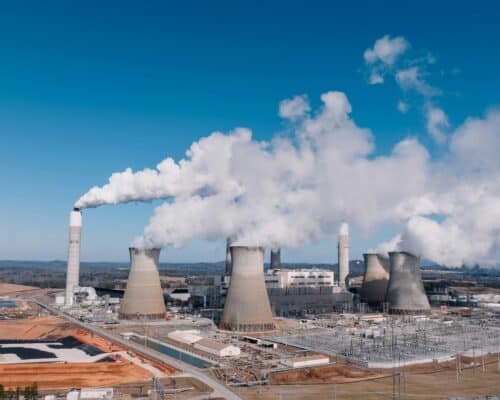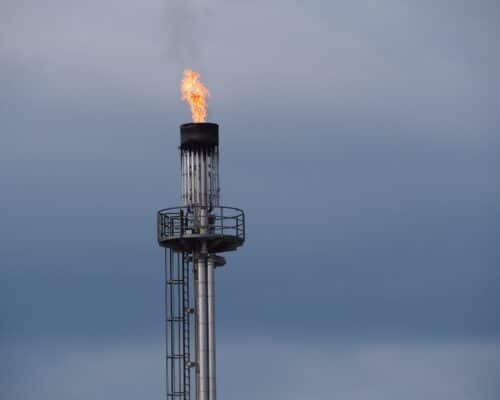The Philippines’ Choice: Going Clean or Going With SMC
03 October 2023 – by Viktor Tachev Comments (0)
The Philippines has long been under pressure from the fossil fuel lobby and companies like the San Miguel Corporation (SMC) to develop LNG at the expense of renewables. This has cost the economy, environment and regular Filipinos dearly. The new leadership has the power to change that.
The LNG Expansion Plans in the Philippines: What Is at Stake?
The Philippines commissioned its first LNG terminal earlier this year. The country currently has 36.5 million tonnes of annual import terminal capacity under development. The pipeline of gas-fired power projects is 29.9 GW. Over 80% of them are in the proposal and preconstruction stages.
Despite calls from the IEEFA stating that LNG should be a fuel of last resort for the Philippines, the proposals for new LNG infrastructure in the country are growing at an unprecedented rate.
The main driver is the SMC Global Power Holdings Corporation. The power arm of the San Miguel Corporation has a pipeline of 14.1 GW. Aside from the 1.2 GW, gas-fired power plant in Ilijan that is already up and running, it plans to construct seven more. Among them is a 1.75 GW power plant in the Verde Island Passage.
The Philippines has a crucial choice to make, and it must do so now. Once those projects launch, there won’t be a simple exit strategy. The country will risk facing long-lasting financial, environmental and societal consequences.
Debt Traps and Economic Burdens
The IEEFA warns that the Philippines is entering the LNG market during extreme uncertainty when supplies are tight and prices are reaching record highs. Moreover, the situation is likely to persist over the next decade.
Recently, the country imported its first two LNG cargoes. The IEEFA believes their price tag should be a warning sign for the exorbitant upcoming LNG import bills. Gas prices will likely remain high until 2026, when significant new supply capacity comes online. Unlike other countries, the Philippines lacks long-term contracts, which exposes it to market volatility.
As a result, it has no choice but to outbid wealthy buyers to ensure a stable supply. According to the IEEFA, without affordable fuel, the proposed LNG pipeline in the Philippines could be delayed, cancelled or stranded. The agency notes that LNG projects have been repeatedly cancelled since 2003. Today, just 29% of the LNG projects in the country are viable, while the stranded asset risk of LNG-to-power projects is USD 14 billion.
High Power Costs
Filipinos pay some of the highest electricity rates in Asia, with only Japan and Singapore charging their consumers more. Compared to its ASEAN neighbours, the country’s electricity is between 25% and 87.5% more expensive.
The reason is that high imported fuel costs lead to higher power generation costs, as the IEEFA notes. Due to the country’s current model and power companies lacking long-term contracts to hedge against volatility, the gas price hikes are passed directly to consumers.
However, power prices are likely to continue increasing. SMC is seeking a temporary rate increase from the Energy Regulatory Commission for some of its power plants to shelter high imported fuel costs. According to the IEEFA, the company will likely continue pushing for a full pass-through of fuel costs to shore up its financial position and fossil fuel expansion.
“If SMC produced electricity mainly from renewables, consumers wouldn’t have to fear extortionately high electricity bills anymore,” explains Nicole Rath, fossil free finance campaigner at Urgewald.
In March 2023, the DOE publicly acknowledged that LNG could cause a power price increase. Yet, in September, it issued a draft revealing its intentions to make the country “a major player in the Asia-Pacific Region through the development and operation of LNG facilities”. Furthermore, according to the IEEFA, the wording in the draft implies that the ERC may end up allowing the high LNG costs to be passed on to consumers.
This contradicts President Marcos Jr.’s promise to work toward lowering energy costs in 2023.
Fuelling Climate Change
“With gas, we are driving down the same road to economic and climate disaster as we did with coal. We merely switched lanes,” warns Gerry Arances, executive director of the Center for Energy, Ecology, and Development.
Between 2000 and 2019, the Philippines was the fourth most affected country by extreme weather events globally. In 2022, it topped the World Risk Index of the populations most at risk of earthquakes, cyclones, floods, droughts and sea-level rise.
According to the Philippines’ Department of Science and Technology, the country should brace itself for the worsening impacts of climate change.
The IPCC warns that the Philippines is at risk of unprecedented compound extreme weather events.
Temperatures in the country will increase by between 1⁰C and 2⁰C or more by 2100, depending on the different climate change scenarios. The number of extremely hot days and days with intense rainfall will increase dramatically.
Sea level rise in the Philippines is higher than anywhere else, with three times the global average since 1901. The trend will continue regardless of the emission scenario.
Scientists also warn that climate change poses serious health risks for Filipinos, including mortality and morbidity. Currently, 61% of heat-related deaths in the country are attributable to climate change.
The World Bank estimates that, without action, climate change will reduce GDP by as much as 13.6% by 2040. The poorest households will be the most affected.
Environmental Damage in the Philippines
There are 16 proposed LNG import terminals and gas plants in the Verde Island Passage, also known as the “Amazon of the Oceans”. According to studies, building fossil fuel infrastructure in the most biodiverse marine habitat in the world can disturb the already dwindling coral cover, disrupt fishing, increase the water temperature and contaminate the soil and water with toxic metals. It also threatens the wildlife and the livelihoods of the 2 million people who rely on it.
Such risks are already materialising. Locals have reported a decrease in fish catches and a rise in the mercury levels of the water. In February, the VIP was hit by one of the largest oil spills in the history of the Philippines. SMCGP was found to be directly responsible.
The fossil fuel fleet under development, led by SMCGP, will lock the Philippines into decades of increased emissions. It also risks worsening the air pollution problem.
In 2022, the air pollution in the country was three times the WHO annual guideline value. According to studies, the Philippines has the third-highest number of air pollution-related deaths globally. Air pollution from burning coal, oil and gas alone has been said to cause 27,000 premature deaths yearly in the Philippines.
“Less fossil electricity production would improve air quality, and fewer people would suffer from respiratory diseases or other illnesses linked to fossil energy,” warns Rath.
Public Opposition
Frontline communities, fisherfolk, religious groups and civil society organisations have united against the fossil fuel expansion in the country. They directly oppose its potential consequences, including energy insecurity, high power costs and threats to health, livelihoods and the environment.
“The campaign in the Philippines against SMC is very strong. Activists have already managed to delay some of SMC’s projects or even get them cancelled,” explains Rath.
Due to growing opposition, SMC withdrew three of its projects’ environmental impact assessment applications. The 1.7 GW LNG power plant in the VIP now faces a cease-and-desist order for several environmental violations. In total, four out of eight SMC projects face delays, if not cancellations.
The Philippines’ leadership is also subject to mounting pressure. Recently, activists gathered before the Department of Environment and Natural Resources calling for the phasing out of fossil fuels.
Renewables as the Alternative For the Philippines and SMC
The share of renewables in the Philippines has been decreasing in the last decade.
According to experts, since fossil fuel companies in the Philippines don’t typically bear the cost of higher fuel prices, they have little incentive to scrap LNG expansion plans and promote more affordable forms of energy.
However, President Marcos Jr. vowed to prioritise addressing climate change’s implications on the country during his campaign. He also promised to harness a diversified clean energy mix, including geothermal, hydropower, wind and solar energy sources, and favour clean energy over coal and fossil fuels to tame the energy crisis.
Doing so will unlock massive benefits for the Philippines. While solar power has a negligible 1.7% share in the total power mix, in 2022, it saved USD 78 million in fossil fuel costs.
Furthermore, the IEEFA estimates that the price of clean electricity in the Philippines is twice as low as that of imported LNG. The agency notes that domestic renewables can deliver low-cost power at scale, as demonstrated by the recent success of the Green Energy Auction Program.
Fortunately, the country has an estimated 246 GW of untapped renewable energy potential. As it is nested in the Ring of Fire, a zone of Pacific volcanoes, the Philippines is among the world’s top geothermal power producers. The high solar irradiation and wind speeds of 6.4 to 10.1 metres per second have prompted the government to set ambitious plans for a boost in solar and wind capacity by 2030.
If the Philippines wasn’t blessed with such an immense clean energy potential, pushing ahead with LNG expansion would have been reasonable. Considering its natural resources, however, doing so would be self-destructive – especially from an environmental, financial and societal point of view.
When the government, scientists, market experts and the public are all on the same page, there should be no obstacles to the clean energy transition in the Philippines.
by Viktor Tachev
Viktor has years of experience in financial markets and energy finance, working as a marketing consultant and content creator for leading institutions, NGOs, and tech startups. He is a regular contributor to knowledge hubs and magazines, tackling the latest trends in sustainability and green energy.
Read more




